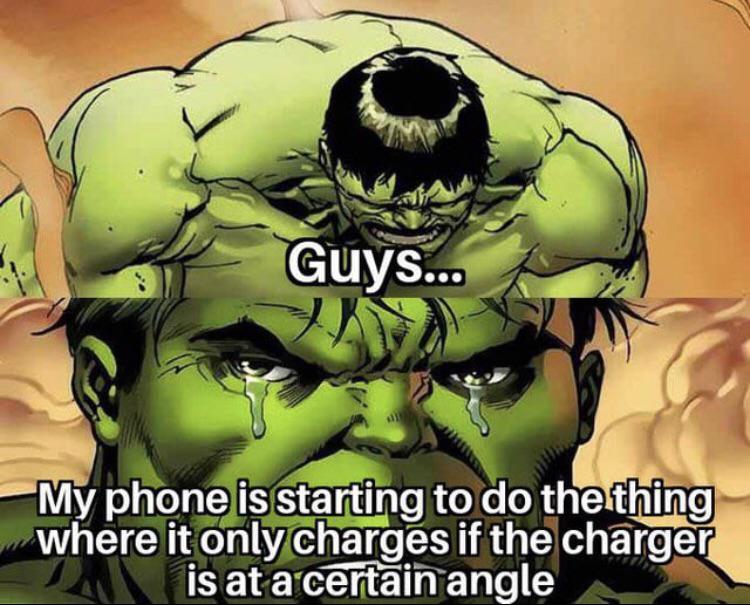this post was submitted on 03 Oct 2024
863 points (97.5% liked)
Funny: Home of the Haha
6982 readers
478 users here now
Welcome to /c/funny, a place for all your humorous and amusing content.
Looking for mods! Send an application to Stamets!
Our Rules:
-
Keep it civil. We're all people here. Be respectful to one another.
-
No sexism, racism, homophobia, transphobia or any other flavor of bigotry. I should not need to explain this one.
-
Try not to repost anything posted within the past month. Beyond that, go for it. Not everyone is on every site all the time.
Other Communities:
-
/c/[email protected] - Star Trek chat, memes and shitposts
-
/c/[email protected] - General memes
founded 2 years ago
MODERATORS
you are viewing a single comment's thread
view the rest of the comments
view the rest of the comments

I have had this happen so much more with USB-C than microUSB connectors. I think it's just a matter of how it locks in place. MicroUsb would very often (though not 100% of the time) have some prong like things on one side that held it in place better.
USB-C just kinda snaps over a tiny PCB and has room to wiggle around, which, at least in all the devices I've had break on me this way, the PCB itself becomes loose or even snaps off from constantly being flexed or jostled around by the cable.
They should put those little prong/wing things on the top and bottom (in a way that doesn't mess with the omnidirectional nature of the cable) of the metal oval to lessen this, IMO.
Strange.. My experience has been the opposite of yours. I've actually not had a USB-c cable do this yet.
I've had it happen to plenty of USB-C devices, but I had far more issues with previous USB generations.
Wireless charging tho is clutch as a backup charging method. Key word being backup.
Same. Never had this issue on any phone, actually...
I have had multiple micro USB ports break, I have not yet encountered a broken USB C port.
Part of the spec for the USB-C port is to not have any moving/flexing parts because that is like 1000% easier to design waterproof/water resistant portable devices for. So to keep with that, to implement your solution the prongs would have to be on the cable. And in that case it should be pretty doable. There's nothing stopping someone from designing an improved cable connector and throwing them on a new cable.